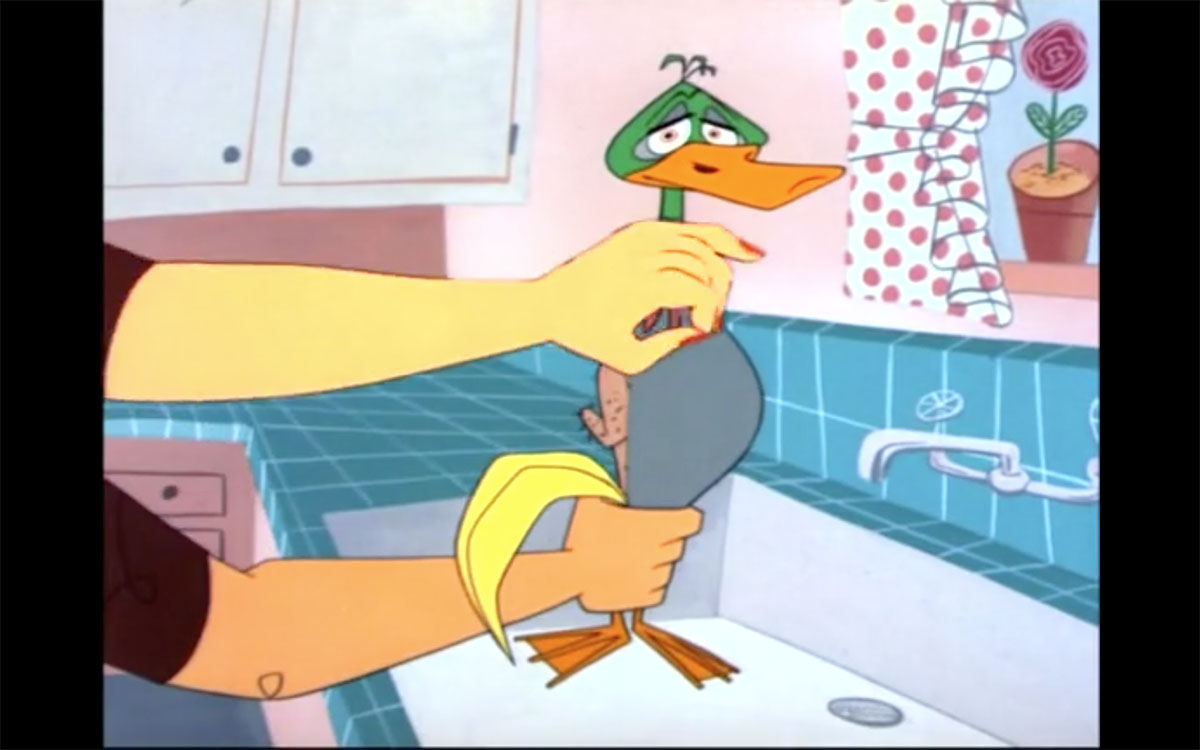the farm of tomorrow

Decades before anyone even started talking about genetically engineered animals and plants on farms, celebrated cartoonist Tex Avery offered his irreverent take on the subject in his 1954 classic, The Farm of Tomorrow. From bizarre animal chimeras to genetically engineered plants, some of the weirdest ideas Avery presented are real possibilities.
A peelable duck is a little tricky, but a chicken with a couple extra pairs of legs? No problem. All life on Earth uses the same double helix, the same four base pairs and the same triplet code to make the same 20 amino acids. (Except bacteria we modified to use quadruplet codes to make extra amino acids.) Because we all use the same blueprints and coding mechanisms, we can do things like implanting jellyfish genes into pigs and spider genes into goats.
But if all you want is extra drumsticks from your fowl, you don’t need to go as far as extracting genes from caterpillars and implanting them in a chicken embryo. Chickens, like all other living things, are built from genetic toolkits that identify each body section and how it will develop in its embryonic stage. Duplicating the signals from the Hox genes that control leg development and activating them in new patches of tissue gives you an embryo that grows extra legs, and in due time, becomes a chicken with extra drumsticks.
Well, at least in theory. Add too many legs and the embryo might grow too large for its egg, run out of food and room to grow, and either hatch before it’s ready or never hatch at all. There are limits on how far you can take genetic manipulation and still have a viable result. Still, it’s pretty impressive how close Avery’s cartoon gets to today’s cutting edge of bioengineering.





